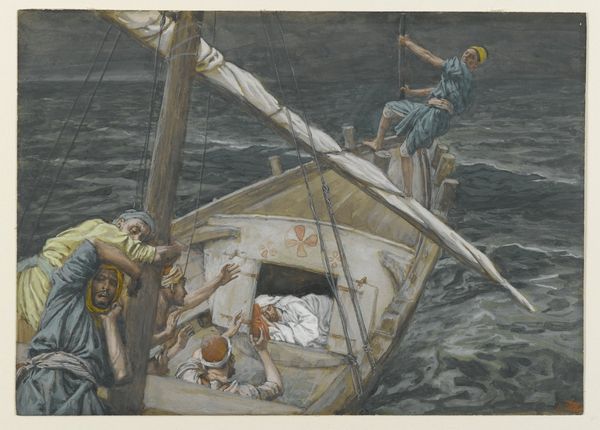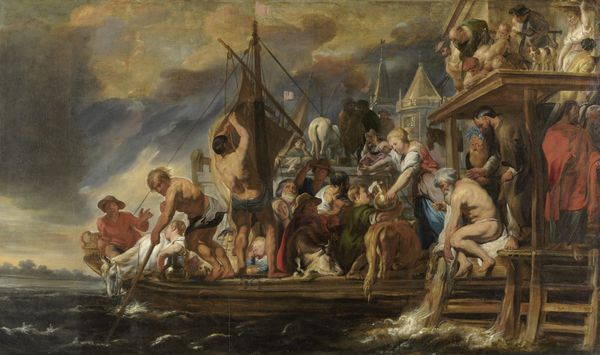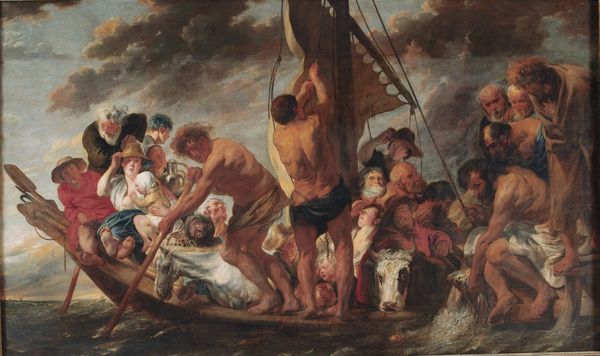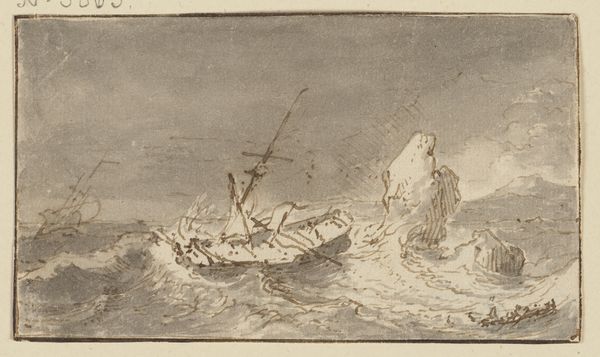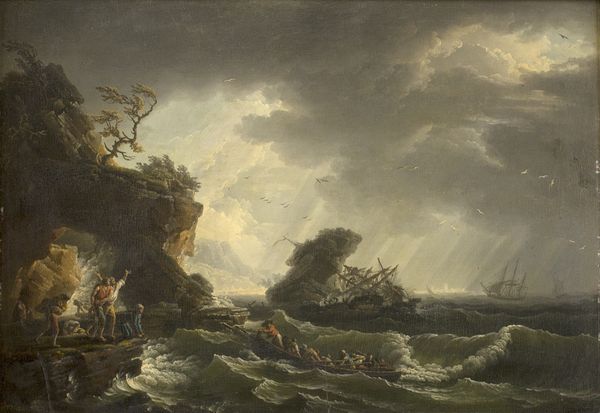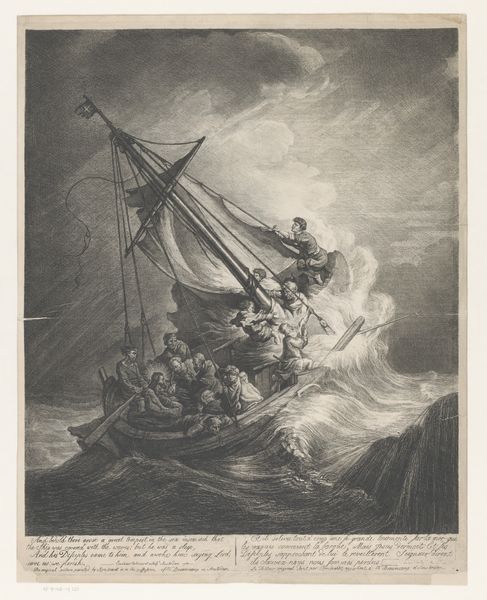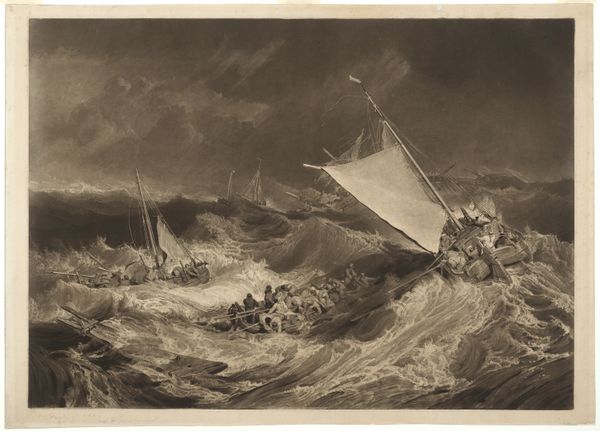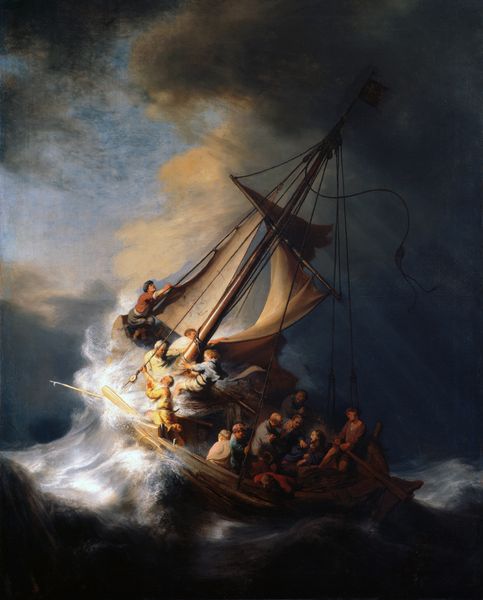
drawing, print, watercolor
#
drawing
#
boat
#
narrative-art
#
ship
# print
#
landscape
#
oil painting
#
watercolor
#
romanticism
#
men
#
watercolour bleed
#
watercolour illustration
#
history-painting
#
watercolor
Dimensions: Sheet (approx.): 16 3/4 × 12 3/8 in. (42.5 × 31.5 cm)
Copyright: Public Domain
Editor: This is Clarkson Stanfield's "Fire at Sea," made sometime between 1820 and 1846. It's a watercolor drawing depicting a dramatic scene on the water. I’m struck by how chaotic and desperate it feels. What do you see in this piece? Curator: I see a potent commentary on the vulnerabilities of maritime life during the height of the British Empire. Consider the Romantic era context: the Industrial Revolution propelled Britain's naval dominance, yet this image unveils the human cost of that progress. What labor was involved, who profited, and whose lives were expendable? Editor: So, it's not just a dramatic scene, but a social commentary? Curator: Precisely. Look at the implied class distinctions. The panicked figures represent the common sailor, while those commanding the ship, possibly less visible or already safe, benefit from their toil. How might the artist’s own background—he was a sailor himself—influence this portrayal? Editor: That makes me think about who had the privilege to survive in such a scenario. The composition almost forces you to consider that aspect. Curator: Exactly! The sweeping diagonal of the burning ship and the overcrowded lifeboat pushes us to consider questions about social structure. And, in connection to Stanfield being a stage designer, the work evokes stagecraft. This composition creates spectacle, sure, but who is the spectacle *for*? Does the artist indict our role as viewers? Editor: That's a really interesting perspective. I hadn’t considered the layers of social critique embedded within this seemingly straightforward depiction of disaster. Curator: By interrogating such historical works through contemporary lenses of power, identity, and representation, we start dialogues, deconstruct hierarchies, and understand more. Editor: Definitely gives me a lot to think about as I look at art! Thanks.
Comments
No comments
Be the first to comment and join the conversation on the ultimate creative platform.

